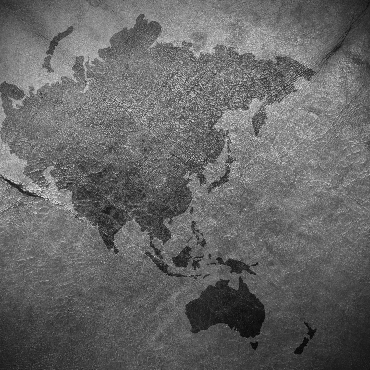JAPAN BREAKS FROM PACIFIST LEGACY, DOUBLES DEFENSE SPENDING
On December 9th, Japanese Prime Minister Fumio Kishida made waves with his announcement of a planned overhaul to Japan's defense policy. Over the next fiscal year, Tokyo plans to boost its defense spending by 1 trillion yen ($7.34 billion), and will set aside $318 billion over the next five-to-ten years for a sustained military build-up. In effect, Japan is doubling its defense spending. In terms of capabilities, Japan reportedly plans to prioritize ammunition and long-range standoff missiles. To put the plus-up in perspective, Kishido's new policy will raise Japan's defense spending from 1% of GDP to roughly 2%, and will rank Japan just behind the United States and China as the world's biggest military spenders. Most significantly, the capabilities Japan seeks are not only defensive, but also offensive, and will equip Tokyo with preemptive strike options – a step that represents a significant departure from the pacifist defense footing Japan has maintained since the end of World War II. (Associated Press, December 5, 2022; Reuters, December 9, 2022)
WASHINGTON, MANILA REPAIR TIES... WITH AN EYE ON BEIJING
Vice President Kamala Harris's recent visit to the Philippines is the latest indicator of what appears to be a revitalization of the U.S.-Philippine partnership. In the face of escalating tensions in the region, Philippine President Ferdinand "Bongbong" Marcos, Jr. is breaking with the policies of his predecessor, Rodrigo Duterte, and prioritizing a closer relationship with the United States. In early November, the Philippine Department of National Defense announced plans to accelerate basing access for American troops under the Enhanced Defense Cooperation Agreement signed between the two countries. The policy reversal comes amid clashes with Chinese fishing vessels in the contested Spratly Islands and waters off Scarborough Shoal, which have alarmed officials in Manila, who have accepted over $66.5 million from the United States to train and modernize the country’s armed forces. The United States, for its part, is leaning in to the Philippine policy change; Vice President Harris's visit to the country included a meeting on Palawan Island near the contested maritime border between it and China, symbolically affirming American commitments to Manila. (South China Morning Post, November 8, 2022; The Straits Times, November 16, 2022; Reuters, November 20, 2022)
DEMOCRACIES CONVERGE ON INDONESIA TO OFFSET CHINA'S INFLUENCE
On the sidelines of the G-20 summit in Bali in November, the governments of Japan, the United Kingdom, and South Korea signed letters of intent to finance Indonesia's Mass Rapid Transit (MRT) network in a bid to rival China's investments in the country. Japan will assist with construction of an East-West Line, while British officials will invest $1.25 billion in railway vehicles. Meanwhile, South Korea will aid in the creation of an eventual link from Fatmawati to Kampung in South Jakarta. All told, Indonesia expects financing potentially exceeding $6.5 billion. Beijing, for its part, continues to maintain investment ties to Indonesia through infrastructure projects like the Jakarta-Bandung high-speed railway. (Reuters, November 14, 2022; The Straits Times, November 15, 2022; International Rail Journal, November 18, 2022)
CHINA DOUBLES DOWN ON CAMBODIAN INVESTMENTS
Back in November, as leaders from the Association of Southeast Asian Nations (ASEAN) met to discuss economic and security issues affecting the region, China announced additional aid to Cambodia. The pledge of $27.6 million is part of a series of development projects under China's Belt & Road Initiative (BRI), which include a $2 billion expressway connecting Phnom Penh to its main port at Sihanoukville. Officials in Washington, meanwhile, are watching closely. For the United States, the deepening Sino-Cambodian partnership holds out the possibility that Beijing could use the Southeast Asian country as a springboard to project force throughout the region. Since 2019, such worries have intensified amid efforts by the People's Liberation Army to expand Cambodia's Ream Naval Base. (Associated Press, November 9, 2022)
CHINA'S INAUGURAL "INDIAN OCEAN FORUM" SIDELINES INDIA
China's designs for economic and military primacy in the Indian Ocean were on full display in November with the convening of the inaugural Indian Ocean Region Forum. The event was not without political drama; Initially, the China International Development Cooperation Agency (CIDCA), the host for the event, claimed that 19 countries in the Indian Ocean region attended – all, except India. Australia and the Maldives, however, quickly clarified that their nationals in attendance were there in a personal capacity. Nevertheless, the stature of the individuals was notable: former Maldives President Waheed Hassan and former Australian Prime Minister Kevin Rudd. The conference addressed regional concerns such as protection of the marine environment, climate change, and COVID-19, but India's exclusion – and the confusion surrounding Australia and Sri Lanka's attendance – underscored Beijing's deeper purpose: eclipsing New Delhi's influence in the region. (The Hindu, November 27, 2022)
Want these sent to your inbox?
Subscribe
Indo-Pacific Monitor No. 29
Related Categories:
Democracy and Governance; Human Rights and Humanitarian Issues; International Economics and Trade; China; India; Japan; Southeast Asia
